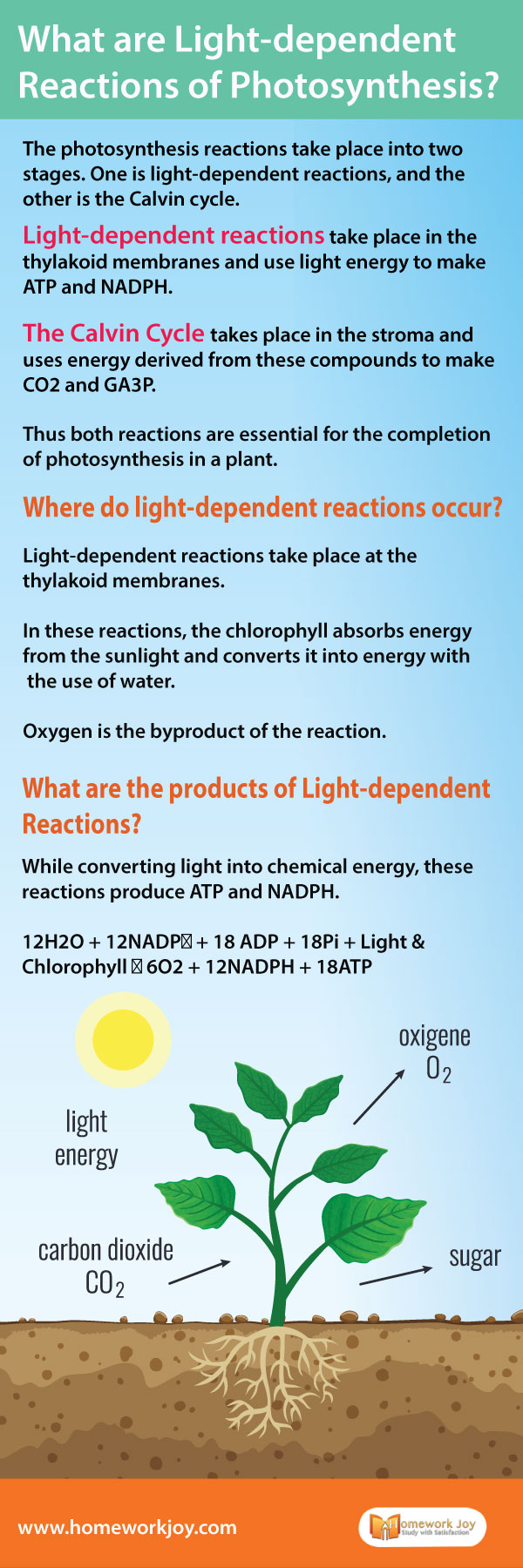The photosynthesis reactions take place into two stages. One is light-dependent reactions, and the other is the Calvin cycle.
- Light-dependent reactions occur in the thylakoid membranes and use light energy to make ATP and NADPH.
- The Calvin Cycle takes place in the stroma and uses energy derived from these compounds to make CO2 and GA3P.
- Thus both reactions are essential for the completion of photosynthesis in a plant.
Also, check some of our posts that might help you in learning biochemistry:
What are Different Types of Solutions in Chemistry
Different Types of Blood Groups You Need to Know
Where do Light-dependent Reactions Occur?
Light-dependent reactions take place at the thylakoid membranes.
In these reactions, the chlorophyll absorbs energy from the sunlight and converts it into energy with the use of water.
Oxygen is the by-product of the reaction.
Aim of the Light-dependent Reactions
The main aim of light-dependent reactions is to convert solar energy into chemical energy in the form of NADPH and ATP. These carriers are then useful in the Calvin cycle.
What are the Products of Light-dependent Reactions?
While converting light into chemical energy, these reactions produce ATP and NADPH.
12H2O + 12NADP⁺ + 18 ADP + 18Pi + Light & Chlorophyll → 6O2 + 12NADPH + 18ATP
In this light-dependent reactions, chlorophyll absorbs energy from sunlight and then this energy into chemical energy by using water. Thus the reaction releases oxygen as the by-product by breaking water molecules.
7 Steps of Light-dependent Reactions
- Absorbing energy from the sun for the first time
- Water molecule breaks down to release oxygen
- Transportation of hydrogen molecules across the thylakoid membrane
- Again the energy is absorbed from the sun
- Production of NADPH from NADP+
- Protein channel diffuses hydrogen ions
- ADP transforms into ATP
Difference Between Light-dependent and Light-independent Reactions
The following are some differences between light-dependent reactions and light-independent reactions:
Light-independent Reactions
- In the light-independent reactions, chemical energy collected during the light-dependent reactions produces sugar molecules from carbon dioxide.
- Also, these reactions don’t use light as a reactant. However, several enzymes of light-independent reactions are activated by light.
- These reactions consist of the Calvin cycle, where carbon dioxide is fixed.
Light-dependent Reactions
- On the other hand, light-dependent reactions utilize this molecule to store energy for some time. That is why they are known as energy carriers.
- These chemical reactions use light energy as reactants.
- Light-dependent reactions consist of chlorophyll molecules absorbing photons that cause electrons to move to a higher energy level.
Three Parts of Light-dependent Reactions
- Photosystem 2
- Photosystem 1
- ATP Synthase
So it was a lesson on light-dependent reactions that occur during photosynthesis. If you need to know more about the topic or need online assignment help, then rely on us. Our experts are 24×7, ready to help you.
